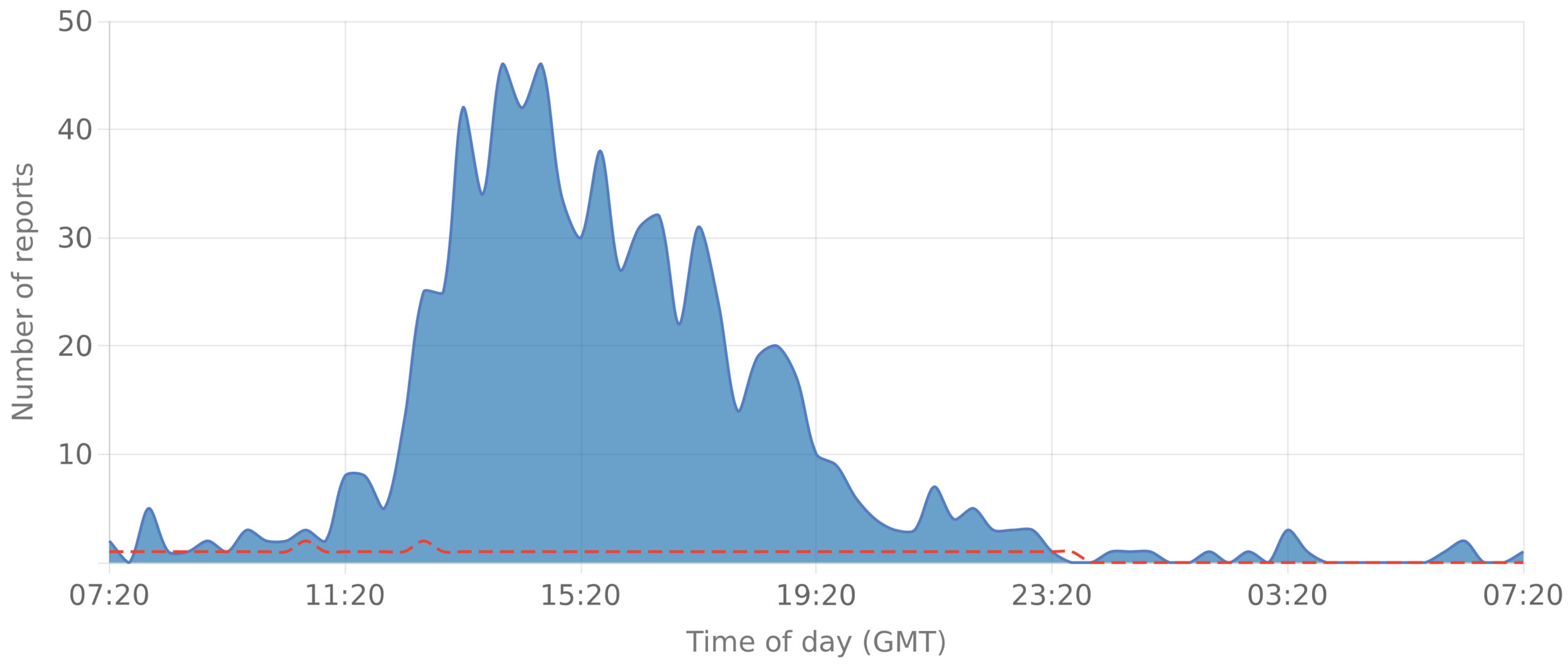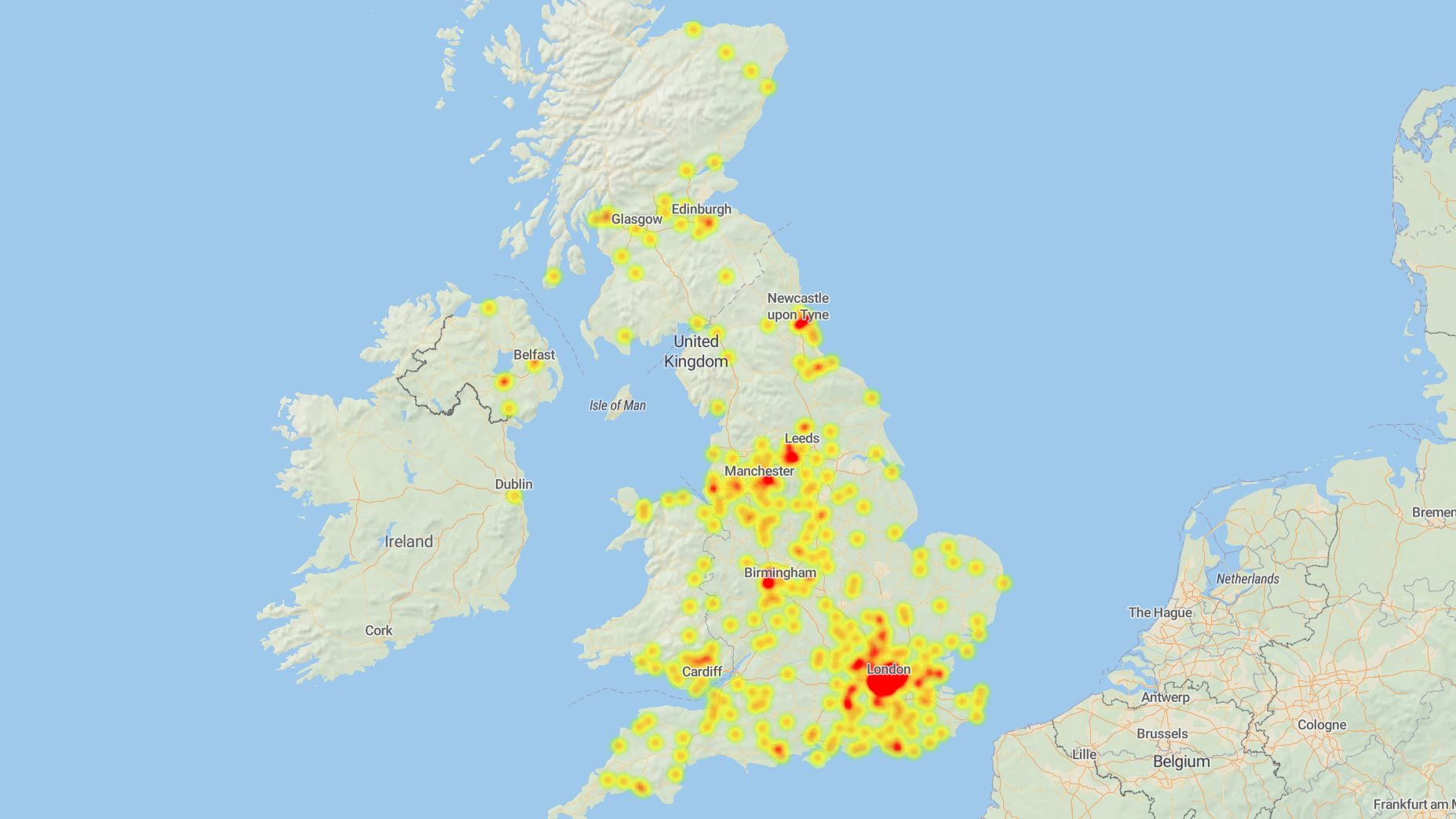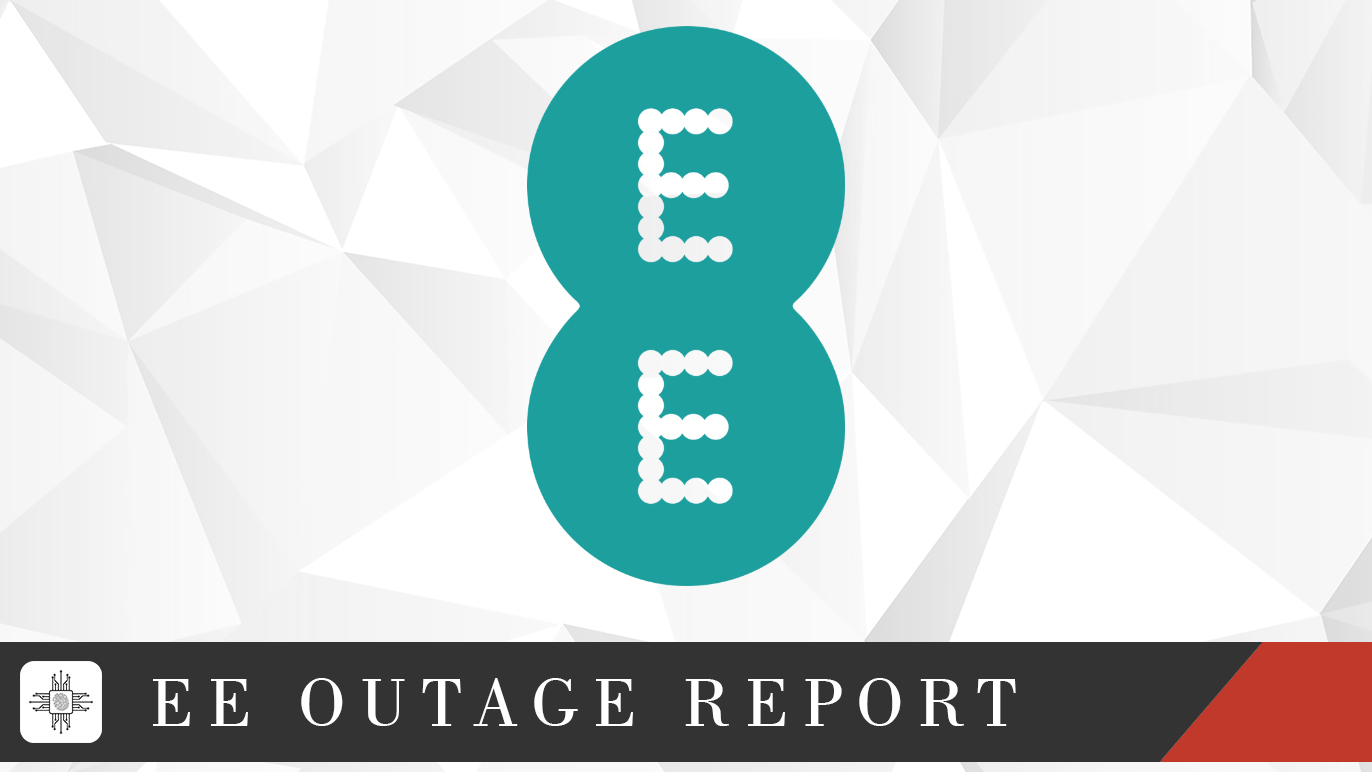On July 24, 2025, thousands of EE and BT customers across the UK found themselves abruptly silenced. What began as scattered reports of call failures at 11:15 AM BST exploded into a full-blown telecommunications crisis, leaving users unable to make or receive calls, triggering panic, frustration, and nationwide disruption.
The latest outage map reveals EE’s service collapse has created a digital disaster zone across the UK. As of 25 July 2025 at 2:30 AM GMT, these areas are suffering most severely:
| Top 10 Affected Locations | Reports | Primary Issues |
|---|---|---|
| Birmingham, England | 469 | Total Blackout |
| London, England | 448 | Phone & Internet |
| Manchester, England | 225 | Mobile Data Failure |
| Tower Hamlets, England | 97 | Call Drops |
| Bristol, England | 91 | Wi-Fi Disruption |
| Glasgow, Scotland | 56 | Emergency Call Failures |
| Leeds, England | 47 | Network Unavailable |
| Belfast, Northern Ireland | 19 | Complete Service Loss |
What Happened? The Timeline of Chaos
- 11:00 AM BST: Reports surged on Downdetector, with EE users in London, Manchester, Birmingham, and Glasgow hit hardest. Peak outages reached 2,600+ reports by 2:15 PM—the highest spike since Three’s June 2024 outage.
- Inter-Network Breakdown: The core failure involved inter-network voice connectivity. EE customers could call other EE users but not Vodafone, O2, or Three numbers—and vice versa. This “interconnection fault” cascaded across carriers.
- Emergency Services Impact: Critical 999 calls briefly failed in Devon and Somerset, though services were restored by 3:00 PM. The UK government confirmed EE’s emergency lines were prioritized during repairs.
- Resolution: By late Thursday, BT Group (EE’s parent) announced fixes. A spokesperson stated: “We resolved the problem, and services are running normally.”
The Ripple Effect: Who Was Impacted?
- Direct Victims: EE, BT Mobile, and BT landline users faced total call blackouts. MVNOs (Mobile Virtual Network Operators) like 1pMobile and Lyca Mobile—which rely on EE’s infrastructure—also crashed 38.
- Indirect Collateral: Vodafone and Three users reported issues calling EE contacts. Vodafone clarified this was due to “number porting glitches” (customers who switched from EE) 24.
- False Alarms: O2 and Three confirmed their networks were functional. Downdetector spikes stemmed from users struggling to reach EE numbers—not internal failures 47.
💡 User Anguish: “@EE: Can’t make or receive calls. All I get is beep beep!”
“Tried calling 101 (police non-emergency) — call drops immediately”
🚨 What Users Report Right Now
- Total Blackouts (19%): *”No signal for 18+ hours in Wembley – can’t run my business!”* (Reported 3 hrs ago)
- Emergency Access Failures: Multiple 999 call failures in Lewisham and Fulham
- Data Desert: 36% unable to load basic web pages despite “5G” display
- Corporate Silence: Zero EE updates since 10 PM yesterday
💣 Breaking: South Western Ambulance Service confirms “ongoing intermittent issues contacting EE users” via emergency lines.
The Technical Culprit: Why Did EE Fail?
While BT/EE avoided detailing the root cause, evidence points to a SIP trunking failure—a system routing calls between networks via the internet. Key clues:
- EE’s status pages showed “full coverage,” confirming the issue wasn’t physical towers.
- Business VoIP providers noted EE-specific handoff failures.
- BT’s landline outages (also SIP-dependent) aligned with mobile crashes.


Compensation Rights: What You’re Owed
Per Ofcom regulations:
- Landlines: If unrepaired after 2 full days, you’re owed £9.98/day until fixed.
- Mobile Outages: Refunds are “circumstance-dependent.” Demand account credits for prolonged failures.
Expert Insight: Ernest Doku (Uswitch) urges: “Report immediately! Providers must compensate for critical service loss.”
Key Takeaways
- Test Inter-Network Calls: During outages, verify connectivity across carriers—not just your own.
- Use Social Media for Updates: EE and Vodafone used X (Twitter) for real-time advisories.
- Demand Compensation: Document outage times and report to providers within 24 hours.
The Bigger Picture: This outage underscores UK telecom’s fragility. With 30+ million BT Group users, redundancy protocols need overhaul.
